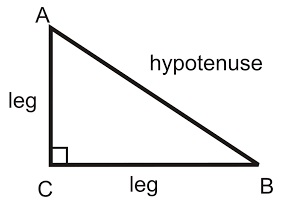Find the hypotenuse of a right triangle with this pythagorean theorem calculator.
How do you get the hypotenuse from the pythagorean theorem?
To calculate the hypotenuse, use the pythagorean theorem as follows:
A2 + B2 = C2
A and B are the lengths of the legs of the triangle. C is the hypotenuse.
Example: A right triangle with a length of Leg A as 50 inches and a length of Leg B as 50 inches has a hypotenuse of:
502 + 502 = C2
C2 = 5000
C = 70.7107 inches

